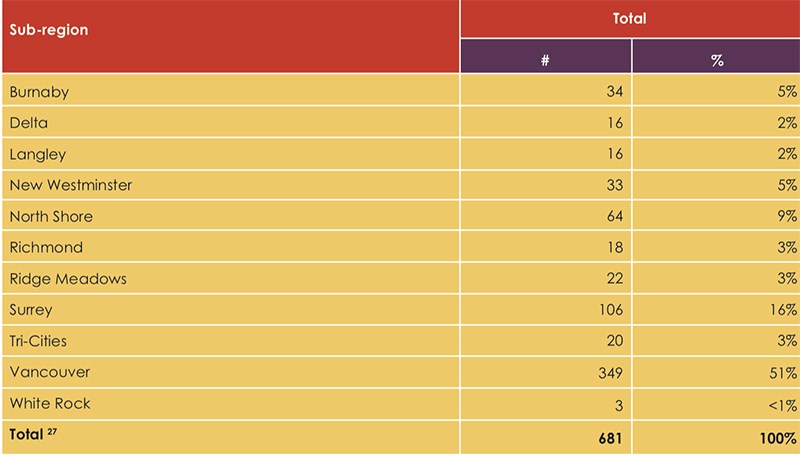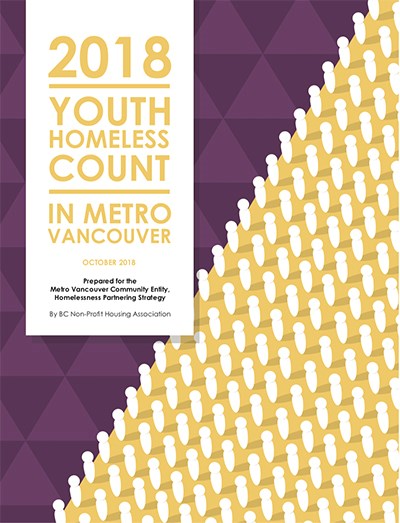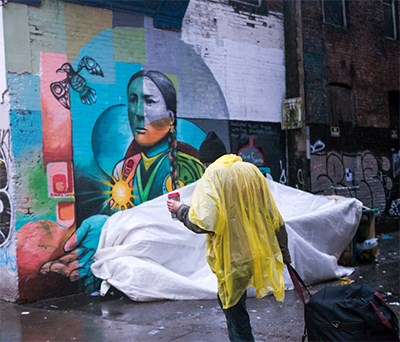There were 20 homeless youth in the Tri-Cities when Metro Vancouver did its first youth homeless count in April.
The results released Thursday showed there were 681 youth between the ages of 13 and 24 who were homeless in the region from April 4 to 12. The 20 in the Tri-Cities accounted for 2.9% of the total which put it seventh out of 11 sub-regions.

Although it has a total population of approximately 265,000, the Tri-Cities’ youth homeless count was lower than: Burnaby (34), which has 233,000 people according to the 2016 census; New Westminster (33), a population of about 70,000; and Ridge Meadows (22) with about 100,000 people. The largest concentration of homeless youth was in Vancouver with 349 while Surrey accounted for 106 and the North Shore 64.
Unlike previous general homeless counts which involved hundreds of volunteers fanning out across a region over a 24-hour period, this one was done by detailed surveys distributed to youth centres, high schools and shelters, and a client spreadsheet filled out by youth service workers.
But despite the new methodology and more detailed info, it’s likely the actual numbers are higher, said Jennifer Hanrahan of the St. Leonard’s Youth and Family Services in a Metro Vancouver press release.
The report said 74% were either couch surfing or in a shelter, transition house, detox centre or recovery house. Half of those surveyed are either in or have been in foster care with 11% becoming homeless after aging out of care, and about 44% had been homeless for at least a year.
Rob Thiessen, managing director of Hope for Freedom, which runs recovery, outreach and shelter programs in the Tri-Cities, said the count of 20 in the Tri-Cities “sounds about right” according to the observation of the organization’s outreach team but it’s also likely lower than reality.
“It’s like grabbing oil, because they’re not visible. They have the ability to couch surf for a very long time before they run out of places to stay,” said Thiessen.
Leah Pells, a counsellor for an alternate program in School District 43, believes the number of homeless youth in the Tri-Cities is considerably higher than the count.
“I’d say there’s more than that. It’s an underestimate just based on the kids that I know,” said Pells. “There’s lots of kids that don’t have anywhere to go.”
Pells said the Tri-Cities area needs a shelter for youth, and has no idea why it doesn’t, especially since the municipalities find money for many other things. She said even though some local governments maintain providing the shelters is the responsibility of senior governments, they should still take ownership of it in their community.

The report said more than half of the youth indicated they were homeless because of a family conflict, and 41% cited drugs or addiction and 33% mental health as reasons.
Family conflict, noted Thiessen, is basically in the opinion of the youth. He said his daughter left for several months before returning.
“To her, family conflict is we had rules that were reasonable and she did not want to follow them,” he said. “It breaks my heart to have youth that are homeless.”
Pells, however, believes the kids when they say they’re homeless because of family conflict.
“For kids to live on the street it’s pretty bad. It’s abuse, substance abuse, poverty, things that make it difficult to stay there,” said Pells. “Kids don’t feel safe and they’d rather sleep outside than in their homes.”
Pells said it’s entrenched trauma that has set them off on the homeless path, including taking drugs and becoming addicted in addition to having a place to sleep. “It’s situations where they’ve experienced really bad things and there’s no hope.” She said a student showed up at the school recently after spending the night in Blue Mountain Park. “Things are pretty bad for them to make that choice.”
Thiessen said homelessness keeps getting worse and worse. “I used to be optimistic, but it’s a growing thing. And with it comes addiction.” He predicted the legalization of marijuana, to come into effect across Canada on Oct. 17, will increase youth drug use and homelessness.



